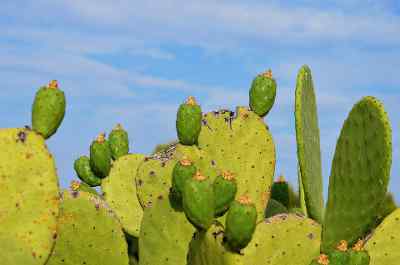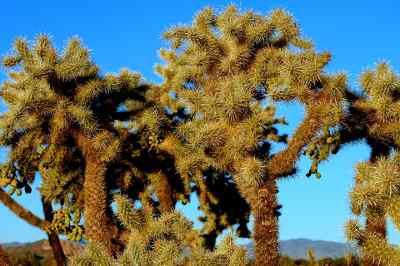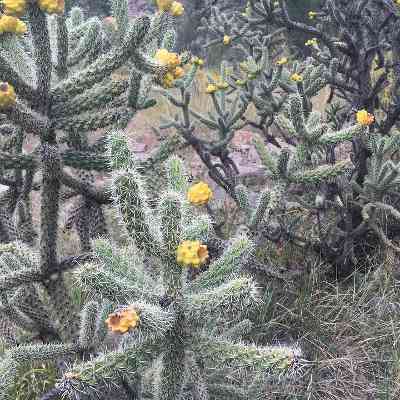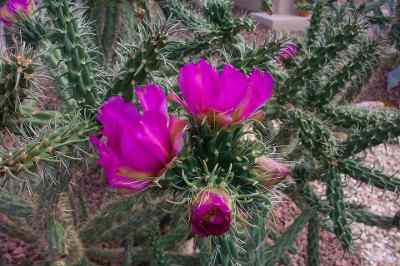Cholla Wild Edible Cactus

The Cholla cacti have cylindrical stems composed of segmented joints. These stems have several purposes such as storing water, photosynthesis and host flower production. And like your generic cactus they all have tubercles. Tubercles are spots on the plant that look like warts or sores from which sharp spines protrude. The spines are actually modified leaves.
Cholla cactus plants are the only cactus with papery sheaths covering their spines. These sheaths are often bright and colorful, which is useful when trying to identify a cactus as to it's genus or species respectively.
Another characteristic to help you identify a cactus as that of the Opuntia group is that they have clusters of fine, barbed spines just above the cluster of larger regular spines. The fine spines are always yellow or red in color and detach easily from the pads or stems.
Cholla cacti are found in all of the hot deserts of the American Southwest, with different species having adapted to different locales. They are found in many deserts worldwide and aren't just restricted to the Southwest USA.
Most species of Cholla bloom April through June. Cholla cacti may grow as creepers, shrubs or trees.
When searching out Chollas to eat, the most edible species in the group tend to have the more flattened pads instead of the species with the rounded stems.
Let's Eat!
Fruit of the Opuntia cacti ripen in late September. The fruit are mature when they turn red on the outside (usually). They will usually turn orange on the inside at this time.
The fruits can be made into syrups, preserves, and jellies just like most traditionally used fruits.
Of course it is easier to simply eat them raw straight off the cactus. To eat simply cut open the fruit and scoop out the insides. The seeds are edible so no need to discard them, although some people do. Some people discard the many small seeds, while others eat them right along with the fruit.
The buds can be dried and then ground into flour.
The green pads of the cactus can be harvested at any time and eaten raw, fried or boiled.
Gathering The Bounty
Gathering cacti for food can be a painful endeavor if you aren't careful. But if you use the proper tool it can be done safely. A sack, knife, gloves and hopefully some long tongs make the job faster and easier.
Remove the spines by holding with tongs and scrape off the spines. Some people burn off the spines; this is a common practice among ranchers that use burners to burn off the spines so their cattle can eat the cactus. Eat raw pads only in small quantities as eating two much will cause a laxative effect.






